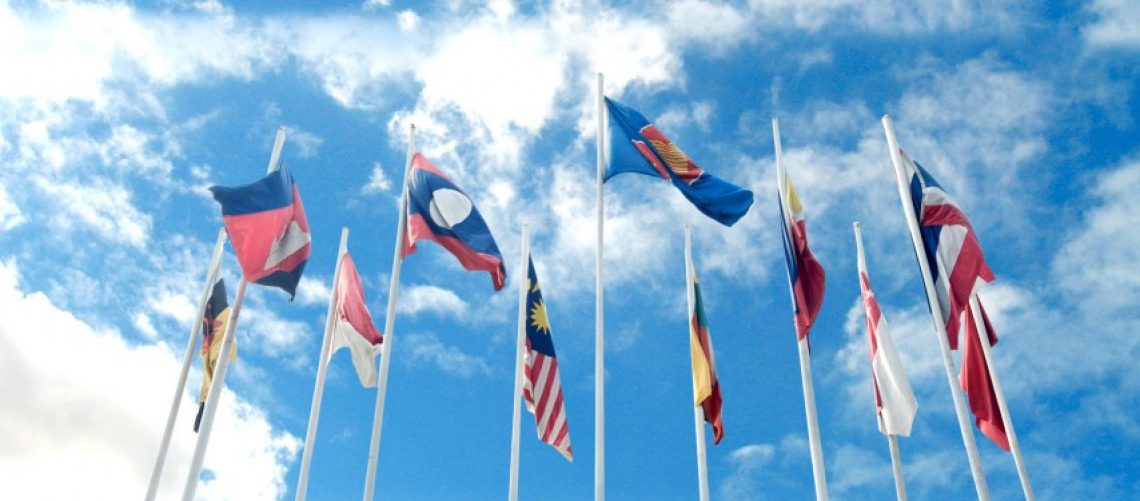1. The Third Cambodia-Lao PDR-Myanmar-Viet Nam (CLMV) Economic Ministers’ Meeting (EMM) was held in Manado, Indonesia on 14 August 2011. The Meeting was chaired by H.E. Cham Prasidh, Senior Minister, Minister of Commerce of the Kingdom of Cambodia, and attended by Mr. Bounsom Phommavihane, the SEOM of Lao PDR representing H.E. Nam Viyaketh, Minister of Industry and Commerce, Lao PDR; H.E. U Tin Naing Thein, Union Minister for National Planning and Economic Development of Republic of the Union of Myanmar; H.E. Nguyen Cam Tu, Deputy Minister of Industry and Trade of the Socialist Republic of Viet Nam; and H.E. Pushpanathan Sundram, Deputy Secretary-General of ASEAN for ASEAN Economic Community.
2. The Ministers recalled the outcomes of the Second CLMV Economic Ministers’ Meeting to further enhance intra-economic and trade relations within CLMV Countries, closer coordinating activities in the sub-regional, regional and international fora, fully utilizing their potentials to narrow the development gap between the four countries and other countries in the region as well as accelerating the implementation of agreements reached at the CLMV Summits.
3. The Ministers were satisfied with the progress of the CLMV Action Plan 2011 and urged all relevant agencies to expeditiously implement the remaining activities under the Action Plan 2011. The Ministers shared the view that the participation of ASEAN, ASEAN Dialogue Partners, Development Partners and international donors in the activities is required to successfully implement the CLMV Action Plans in 2011 and the following years.
4. The Ministers deliberated on the formulation of the CLMV Action Plan 2012 and related issues. The Action Plan 2012 listed twelve priority activities focusing on Economic-Trade, Human Resource Development and Coordination Mechanism.
5. The Ministers also discussed and agreed to the mechanism to report the outcomes of the CLMV Economic Ministers’ Meetings to the CLMV Summit to improve delivery and effectiveness of the projects/ activities and to take full advantage of IAI resources, particularly for the Sectoral Work Programme and the agreed Action Plans.
6. The Ministers from Cambodia, Myanmar and Viet Nam, and the SEOM of Lao PDR, representing H.E. Nam Viyaketh, Minister of Industry and Commerce of Lao PDR, expressed deep appreciation to the Government and people of the Republic of Indonesia for their excellent arrangements and warm hospitality and the helpful support from the ASEAN Secretariat.
List of Ministers and Heads of Delegation
1. H.E. Cham Prasidh, Senior Minister and Minister of Commerce of Cambodia
2. Mr. Bounsom Phommavihane, Director General of Foreign Trade Policy Department, Laos SEOM Leader, Ministry of Industry and Commerce of Lao PDR (representing H.E. Nam Viyaketh, Minister of Industry and Commerce, Lao PDR)
3. H.E. U Tin Naing Thein, Union Minister for National Planning and Economic Development of Republic of the Union of Myanmar
4. H.E. Nguyen Cam Tu, Deputy Minister of Industry and Trade of the Socialist Republic of Viet Nam
5. H.E. Pushpanathan Sundram, Deputy Secretary-General of ASEAN for ASEAN Economic Community
- ABOUT ASEANThe Association of Southeast Asian Nations, or ASEAN, was established on 8 August 1967 in Bangkok, Thailand, with the signing of the ASEAN Declaration (Bangkok Declaration) by the Founding Fathers of ASEAN: Indonesia, Malaysia, Philippines, Singapore and Thailand. Brunei Darussalam joined ASEAN on 7 January 1984, followed by Viet Nam on 28 July 1995, Lao PDR and Myanmar on 23 July 1997, and Cambodia on 30 April 1999, making up what is today the ten Member States of ASEAN.Menu
- WHAT WE DO
ASEAN organs always strive to achieve ASEAN’s goals and objectives, the Secretary-General of ASEAN and the ASEAN Secretariat shall be functioned as coordinating Secretariat to help facilitate effective decision-making withing and amongst ASEAN bodies. In addition, each Member State shall appoint a Permanent Representative to liaise with Secretary-General of ASEAN and the ASEAN Secretariat
Menu - WHO WE WORK WITH
ASEAN shall develop friendly relations and mutually beneficial dialogues, cooperation and partnerships with countries and sub-regional, regional and international organisations and institutions. This includes external partners, ASEAN entities, human rights bodies, non-ASEAN Member States Ambassadors to ASEAN, ASEAN committees in third countries and international organisations, as well as international / regional organisations.
Menu - OUR COMMUNITIES
The rodmap for an ASEAN Community (2009-2015) was declared by the leaders in 2009. The ASEAN Community, anchored on three community pillars: Political-Security Community, Economic Community, Socio-Cultural Community was launched in 2015. The ASEAN 2025: Forging Ahead Together was introduced in 2015 as a Post-2015 Vision. It comprises the ASEAN Community Vision 2025, the ASEAN Political-Security Community Blueprint 2025, the ASEAN Economic Community Blueprint 2025 and the ASEAN Socio-Cultural Community Blueprint 2025
Menu - SITEMAP





